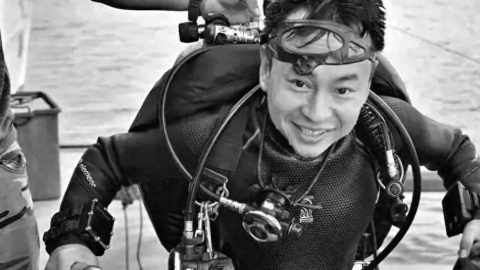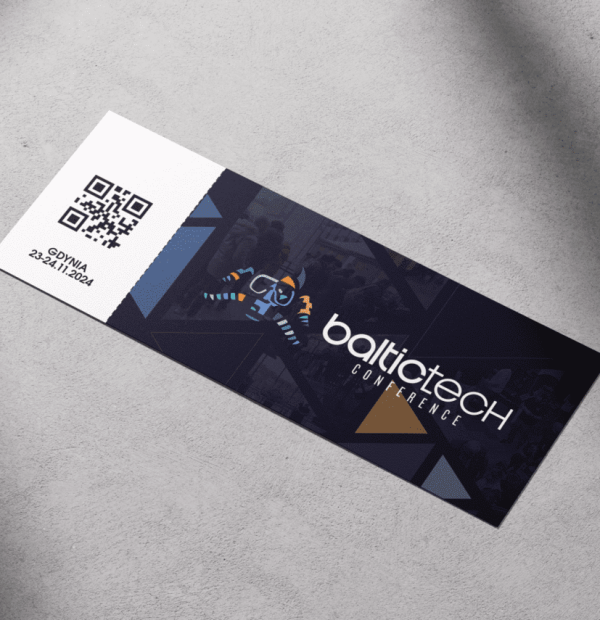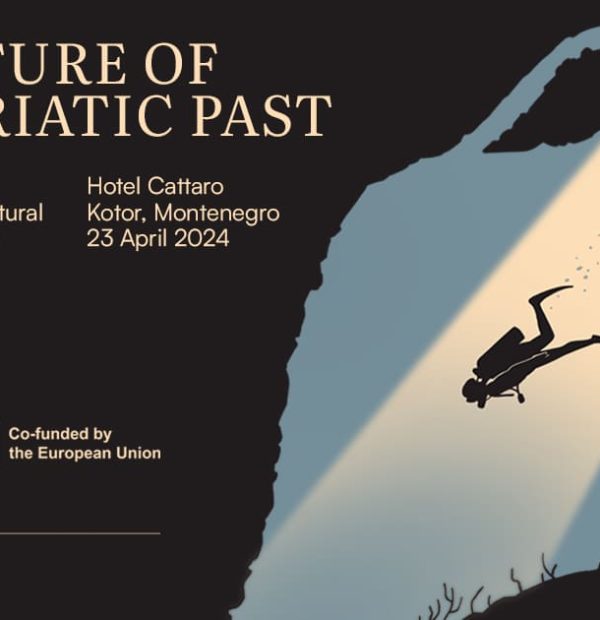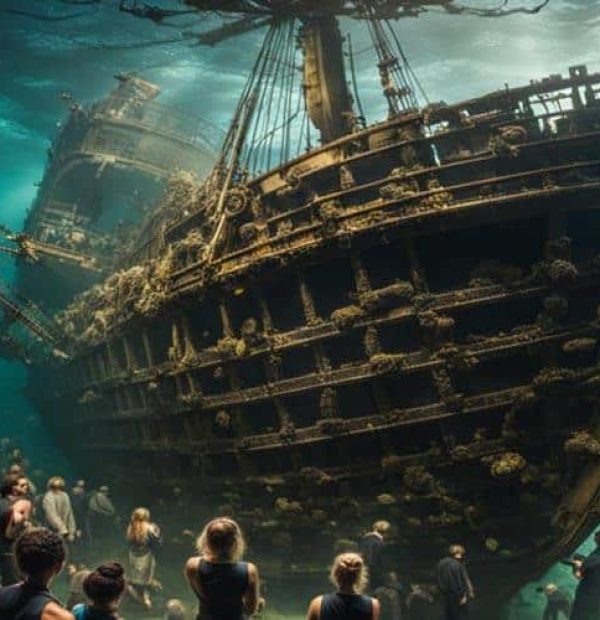Thursday, 16 May 2024
Menu

At www.wsw.nmm.pl you can already see: the wreck of the W-27, the 18th century Frisian cofferdam “De Jonge Seerp” (F54.3), which sank after a collision with the English ship “Recovery” on 11 June 1791; the wreck of a 15th-century medieval ship built using the overlapping method F53.22; the wreck of an 18th-century three-masted W-25 (F53.3); wreck of a 19th-century lightship F53.9 “Łyżwa”; wreck of a 17th-century ship F53.13 and wreck of a 19th-century sailing ship F53.25, transferred in 2006 from the area of the Port of Gdańsk to a new safe place in the Gulf of Gdańsk.
Since 2013 the research team of the NMM led by Dr. Tomasz Bednarz has been implementing scientific and research projects in the field of underwater archaeology, in which an innovative underwater documentation method in the form of photogrammetric 3D models of wrecks from the Gulf of Gdańsk is being developed. The developed and implemented by the NMM team method of photogrammetric 3D documentation of wrecks on the seabed of the Baltic Sea allows for quick and accurate documentation of wrecks in situ, also in case of very poor underwater visibility.
[blockquote style=”2″] Using appropriate computer programs from the SfM (Structure from Motion) category, a system for creating documentation of underwater objects was developed, thanks to which 3D models are created. – says Tomasz Bednarz, PhD, Head of the Digitalization Department at the National Maritime Museum in Gdańsk – Shipwreck models are not only visually attractive presentations, but also a universal and precise measurement tool for underwater archaeology. Apart from their aesthetic values, the presented 3D models of shipwrecks are a faithful representation of the objects and make it possible to create any cross sections, projections and animations[/blockquote].
The models are also an effective tool for monitoring and protecting the underwater cultural heritage. This method is being used and developed in parallel by two research centres, the National Maritime Museum in Gdansk (wrecks from the Gulf of Gdansk) and Texas AM University (Gnalic Project). Both institutions are leaders in the construction of underwater photogrammetric 3D models.
In 2015, the National Maritime Museum in Gdańsk began the implementation of the two-year project “Virtual Open Air Wreck Museum of the Gulf of Gdańsk. Registration and inventory of underwater archaeological heritage”, funded by the Ministry of Culture and National Heritage and the National Maritime Museum in Gdańsk. One of its results is a specially designed website “Virtual Wreck Heritage Park of the Gulf of Gdańsk”, available at www.wsw.nmm.pl, where 3D photogrammetric models of shipwrecks in the Gulf of Gdańsk are presented, along with their descriptions and additional documentation created as part of the project. The website is available in Polish and English language version. The site also contains information on the “Virtual Wreck Heritage Park” project and its creators, as well as on underwater photogrammetry and its history at the NMM.
The “Virtual Wreck Open-Air Museum”, launched as a website in December 2015, initially featured 7 photogrammetric 3D models of wrecks. These were: the wreck of the 17th-century ship W-6 “Solen”, which sank in the Battle of Oliva in November 1627; the wreck of the 19th-century ship F53.31 “Boulder”, which sank with a cargo of stones; the wreck of the 19th-century ship F53.27 “Porcelancer”; the wreck of the 19th-century ship F53.14 “Porcelain Carrier”, the wreck of the 17th century ship W-21, the wreck of the 19th century barque W-23 “Loreley”, which ran aground in the area of the entrance to the port of Gdansk in 1887, and the wreck of the 17th century merchant ship F53.30 “Szklany”, which sank with a cargo of barrels filled with iron bars and glass bottles with tin caps. These were joined in 2017 by a further 6 wrecks mentioned in the introduction.
[blockquote style=”2″]The website contains photogrammetric 3D models, which can be viewed from any perspective and distance also in full-screen mode. – explains Dr Tomasz Bednarz – Models of underwater objects can also be viewed in smartphones using virtual reality devices such as Google Cardboard or Oculus DK1 and DK2. This additionally enhances the feeling of three-dimensionality and spatiality of the presented underwater sites. The materials from the “Virtual Open Air Museum of Wrecks” website are used in educational classes held in NMM facilities, enriching the educational offer of the museum – adds Tomasz Bednarz.[/blockquote]
The NMM research team has been nominated for National Geographic’s prestigious TRAVELERY 2015 award in the ‘Scientific Discovery of the Year’ category for developing and implementing a novel method for underwater 3D documentation of wrecks.
The research manager received the Pomeranian Marshal’s Award in the competition “Pomeranian Museum Award 2015” for the idea and implementation of the project “Archaeological research of shipwrecks from the Gulf of Gdansk using photogrammetric 3D documentation”.
Source: nmm.pl










Welcome to DIVERS24.COM, your daily source of scuba news, freediving, scuba diving information, and equipment reviews. Our comprehensive coverage of the dive industry from A to Z provides you with all the latest scuba news, training updates, underwater photography tips, and everything else related to scuba diving. Whether you’re a beginner or an experienced diver looking for more knowledge about scuba gear or techniques – we’ve got it covered! With our in-depth articles written by experienced divers who have been there and done that, you are sure to find exactly what you need here at Divers24.com. Dive into scuba news today!
Underwater Media Sp. z o.o.
Szafarnia 11/F8,
80-755 Gdansk, Poland
Welcome to DIVERS24.COM, your daily source of scuba news, freediving, and scuba diving information. Sign in for a weekly news update and discount coupons for dive gear and apparel.
@2023 - underwatermedia.pl. All Right Reserved. Designed and Developed by Tworzenie stron internetowych Gdansk

The Divers24 portal is currently the largest online medium treating diving in Poland. Since 2010 we have been providing interesting and important information from Poland and around the world on all forms of diving and related activities.
Contact us: info@divers24.com